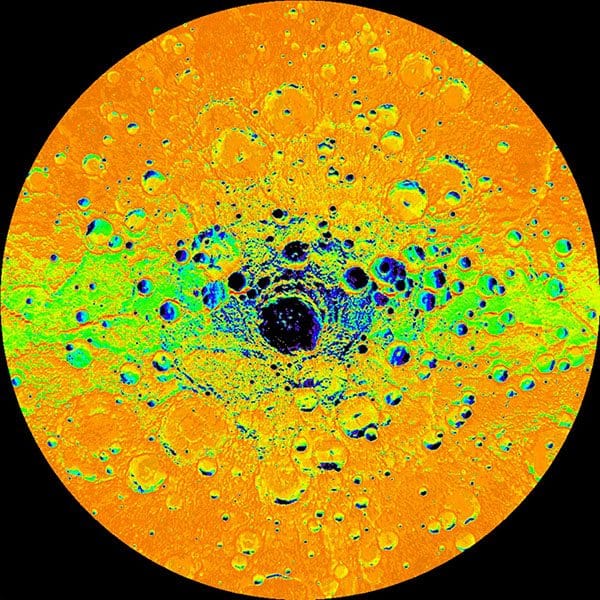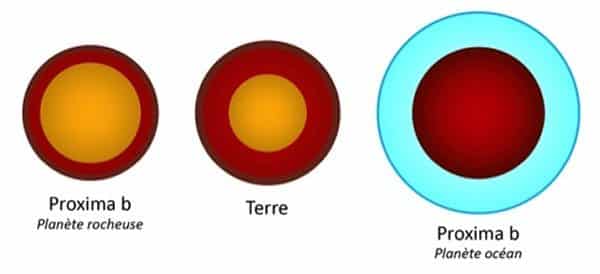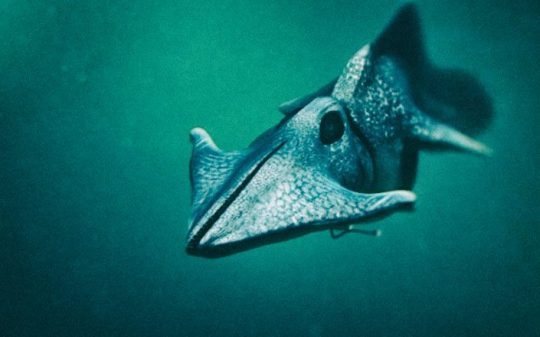Scientists at the Marseille Astrophysics Laboratory think that Proxima b, our closest earth-like neighbor could have liquid water on its surface, fueling speculations about what kind of life might evolve on a habitable waterworld.
The recently-discovered Proxima b orbits a star called Proxima Centauri, located 4.2 light years away from us. The exoplanet is 1.3 times larger than Earth but it is also much closer to its star. Proxima b orbits its star at a distance of just 4.6 million miles. Mercury orbits our own Sun at ten times that distance and look how well that’s turned out for it:

Orange means hot. Credit: NASA/Johns Hopkins University Applied Physics Laboratory/Carnegie Institution of Washington
Fortunately for Proxima b, not all stars are born equal. Proxima Centauri is a red dwarf that has only 0.12 solar masses. Being smaller and cooler means Proxima Centauri emits less radiation than our sun, which compensates for Proxima b’s…proximity. So even if it’s much closer to its star, the planet is still in the habitable zone.
“Contrary to what one might expect, such proximity does not necessarily mean that Proxima b’s surface is too hot for water to exist in liquid form,” the researchers stated. “As Proxima Centauri is a red dwarf, its mass and radius correspond to only one-tenth of the Sun, and its brightness is a thousand times smaller than our star. At such a distance, [Proxima b] is therefore in the habitable zone of its star. It is likely to harbor liquid water at its surface and therefore to harbor life forms,” the team added.
Previously, astrophysicists believed the exoplanet was tidally locked with its star, which would have meant its oceans, if it had any, had been boiled off by the intense heat. New models proposed by scientists from the CNRS (French National Center for Scientific Research) do away with this premise and propose instead a set of scenarios where liquid water not only exists on the surface of Proxima b but even pools into a planetary ocean much deeper than any terrestrial one.
Even when using the world’s most advanced planetary detection methods, scientists are unable to directly image the exoplanet, and its exact size, constituents and atmospheric composition are still a mystery. For now.
When hunting for exoplanets, astrophysicists usually apply the transit photometry method, which involves pointing a telescope at a distant star and measuring the dip in brightness that occurs when a planet passes between us and the star it orbits. Unfortunately, this technique could not be successfully employed in the search for answers about Proxima b, because of its star system’s relative position to Earth. Proxima Centauri is positioned at such an angle that it makes it very difficult for us to measure its transit. So how did they come up with the whole Waterworld hypothesis?
Scientists have a lot of aces up their lab coat sleeves, it turns out.
In this case, the ace came in form of computing power capable of running high fidelity simulations, so the researchers simulated like crazy. By inputting different sets of data about Proxima b, the researchers hoped to accurately represent its behavior and thus work their way back to the planet’s basic characteristics, such as radius and composition. They analyzed a multitude of scenarios and narrowed it down to the two most extreme cases.
Calculations showed that the planet’s radius is somewhere between 0.94 and 1.4 times that of Earth and that makes a big difference. If Proxima b has a radius of approximately 3,700 miles, it must be really dense. With a molten, metallic inner core surrounded by a rocky mantle, it could very well resemble Earth. Temperatures make it possible for water to exist in liquid form on its surface and where there is water, life as we know it can follow. After all, life on Earth started in its proto-oceans.

Proxima b as a rocky planet, Earth and Proxima b as a water world.
If Proxima b’s radius measured closer to the higher end of the calculation, things could get much deeper. In this case, the most accurately simulated scenario posits that the exoplanet is composed of a rocky core surrounded by as much as 120 miles of ocean. This is the kind of depth that gives both Kevin Costner and Robert Ballard wet dreams.

